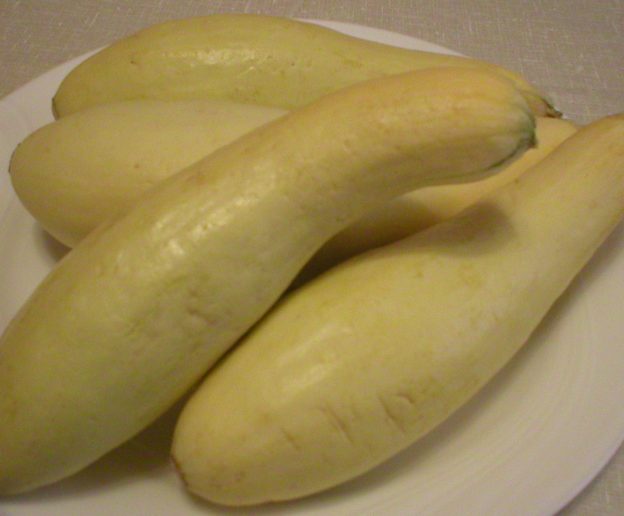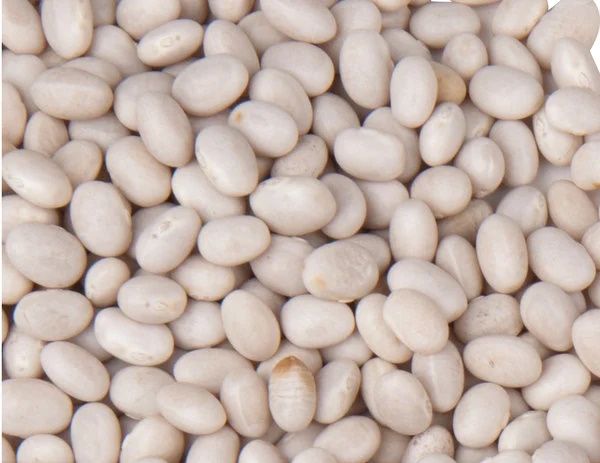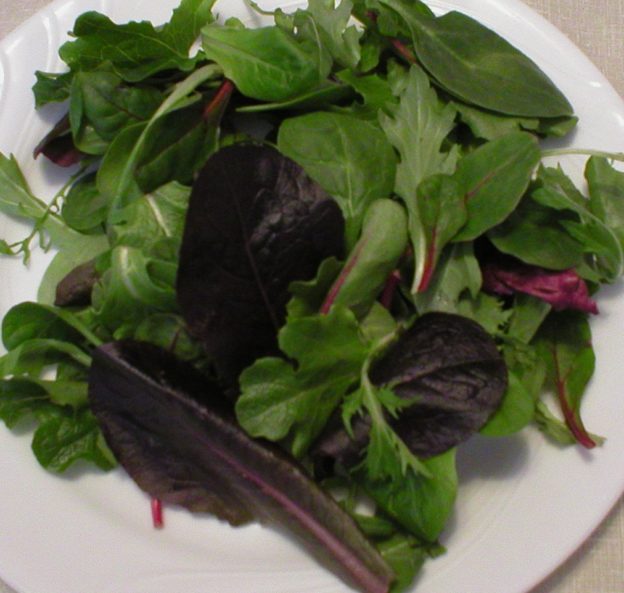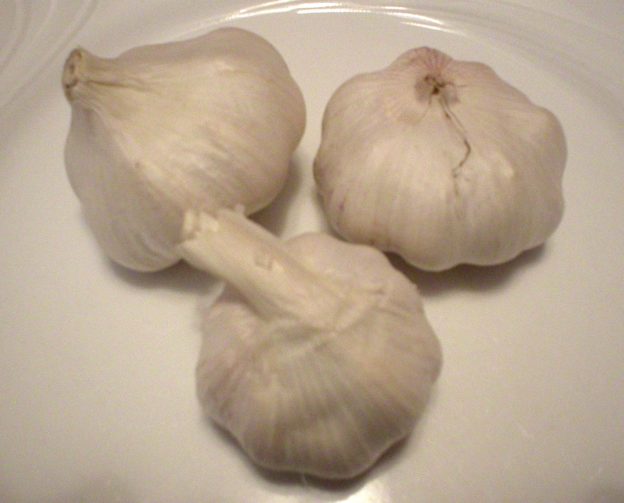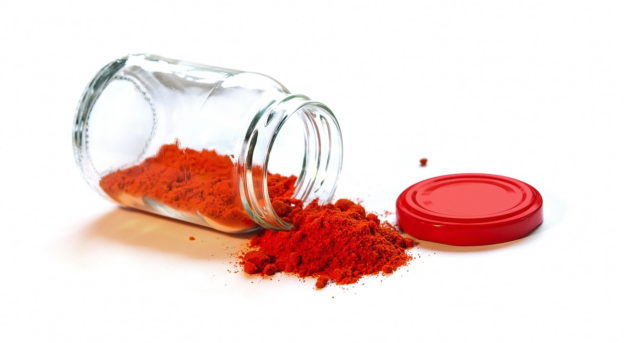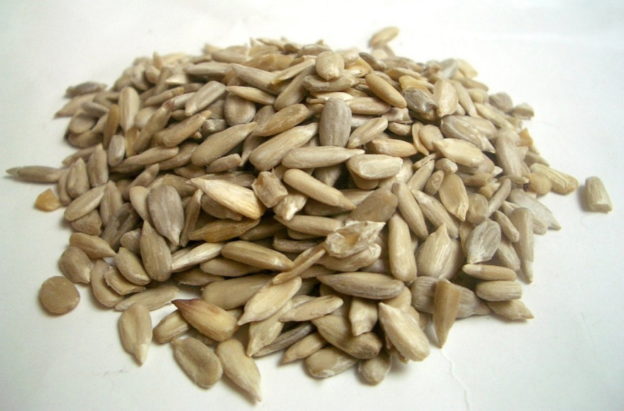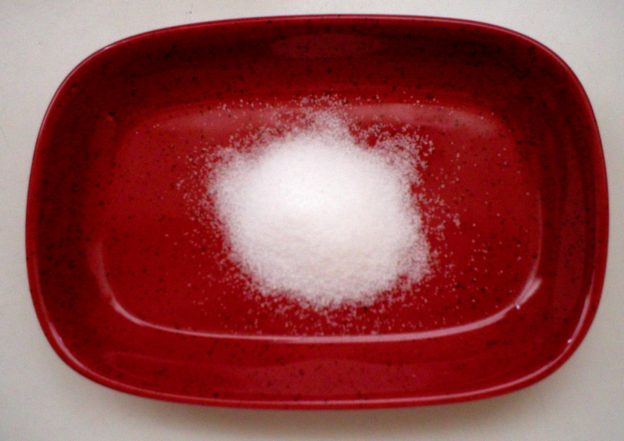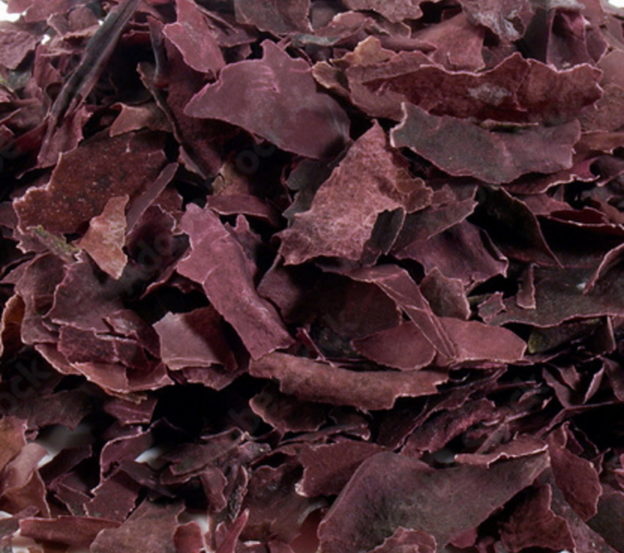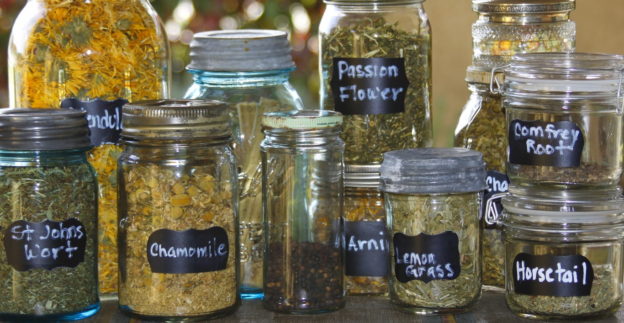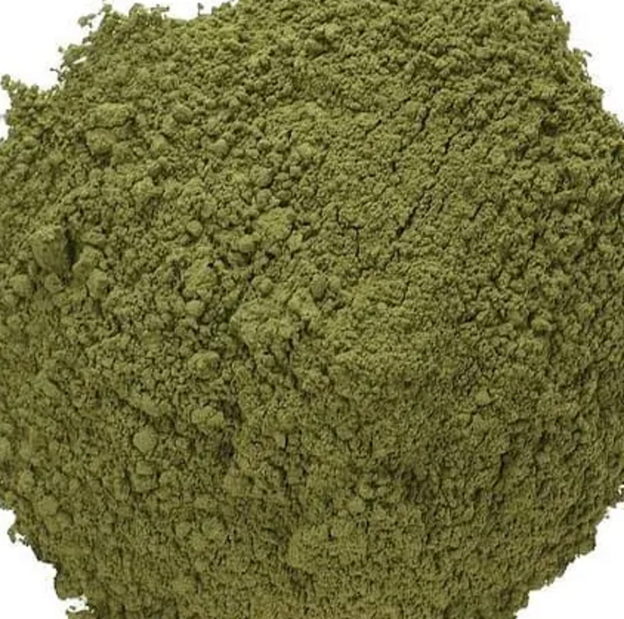Reducing Salt Intake
The words “salt” and “sodium” are often used interchangeably, which leads to confusion with some people. They are not the same thing. “Salt,” also called table salt, is sodium chloride. Sodium chloride is 40% sodium and 60% chloride. One teaspoon of table salt contains about 2,400 mg of sodium. Sodium is a chemical element that we need in small amounts for normal muscle and nerve functions, for helping to keep our body fluids in balance, and more. Many foods in their natural state contain small amounts of sodium.
We all need a little sodium from our foods. In the body, sodium aids in the conduction of nerve impulses, contraction and relaxation of muscles, blood clotting, maintaining a normal heart rhythm, and maintaining the proper balance of water and minerals in our body fluids, both inside and outside of cells. It is estimated that we need about 500 mg of sodium each day for these vital functions. We can easily get that amount from fruits, vegetables, leafy greens, grains, nuts, meats, and seafood in their natural state without adding any salt to our foods.
Sources of Excess Salt in the Diet
The problem comes about when we add salt (sodium chloride) to our foods. This added salt can come from the salt shaker at the table, sauces added to flavor foods, seasonings added while food is cooking, boxed foods with prepackaged seasonings, processed meats and assorted foods with flavorings already added, eggs, soups (especially canned soups), breads, sandwiches, snack foods (such as chips, pretzels, popcorn, snack mixes, and crackers), dairy products (especially cheese), pizza, canned foods, and even commercial beverages.
It is very easy to overdo when using the salt shaker, especially since salt enhances the flavor of foods. Our taste buds quickly adjust to the enhanced flavors so that we expect it any time we eat those same foods. If we’re not careful, over time we can find ourselves slowly increasing the amount of salt that we add to foods because our acquired taste for it can increase our demand for salt. This makes table salt somewhat addictive.
Furthermore, many people rely on processed foods for most of their meals. Such foods have a lot of salt already added to them, not only for flavor, but also as a binder, stabilizer, and a preservative. Bacteria cannot survive in a high salt environment. The high level of salt in processed foods also acts as an addictive agent, often bringing us to crave more of those foods. So we often eat them regularly, much to the delight of the food manufacturers. Hence, most processed foods are high in salt for a number of reasons. Most Americans eat at least 1-1/2 teaspoons of salt a day, which comes to about 3,400 mg of sodium. This amount is way more than our bodies need, and can often lead to health concerns.
Different types of salt contain varying amounts of sodium per teaspoon, with fine Kosher salt and black salt having the least amount. According to https://Cronometer.com, one-fourth teaspoon of generic table salt contains 589.5 mg of sodium, or 39% of the recommended maximum amount of sodium. This mere amount of table salt still contains more than we really need metabolically. AND that doesn’t account for the sodium we get from foods in their natural state. People who use any salt at all will most likely consume more than that one-fourth teaspoon in any one day. Hence, for the sake of our health, we should make a conscious effort to try to bring our salt intake down.
Symptoms of Too Much Salt in the Diet
Signs that we have eaten too much salt can occur quickly after a meal, like increased thirst. This is a sign of dehydration, with the body signaling us to drink more fluids. Other symptoms of having eaten too much salt include swollen feet or hands, headache (in some cases), and a rise in blood pressure. These symptoms may or may not be prolonged since the kidneys are always working to balance the sodium and fluid levels in the body. However, if you continually overeat salt, the kidneys may not be able to eliminate all the excess sodium and it may start to build up in the body. This leads to the serious health risks associated with too much salt intake.
Health Risks Associated with a High Sodium Diet
Too much sodium in the diet can lead to a variety of serious health conditions. Here are some examples.
Hypertension, Heart Disease and Stroke. When we consume too much sodium (whether it’s from salt added at the table or in cooking, from restaurant foods, or from processed foods), the kidneys are forced to work very hard to keep the proper balance of fluids and electrolytes in the blood. They will retain water to dilute the excess sodium in the blood. This increases the amount of extracellular fluid and the volume of blood in the bloodstream. The increased blood volume forces the heart to work harder and increases pressure on the blood vessels. Over time, this extra work and pressure can lead to high blood pressure, heart attack, and even stroke, eventually leading to heart failure.
Kidney Disease and Kidney Stones. Besides being a risk factor for heart disease and stroke, high blood pressure is also a risk factor for kidney disease. With prolonged high sodium intake and increased blood pressure, the kidneys gradually lose their ability to excrete excess sodium. A study reported in the October 2014 issue of the American Journal of Hypertension found that patients with chronic kidney disease who had intakes of sodium greater than 4,600 mg a day experienced progression of their disease.
Many scientific studies have shown that there is a relationship between a high salt intake and increased calcium excretion through the kidneys. The amount of calcium that your body loses through the urine increases with the amount of salt you eat. The blood level of calcium needs to remain relatively constant. So, when the kidneys call for more calcium because of a high salt intake, calcium is leached from the bones to meet the need at the moment and keep the blood calcium level stable. This can be a contributing factor in the development of weakened bones at any age. Calcium is a major component of kidney stones and such stones are more likely to form when the kidneys are forced to process increased calcium due to increased salt intake. Limiting salt intake has been shown to reduce the formation of kidney stones, while also reducing the excretion of calcium through the urine, thus causing less leaching of calcium from bones. Therefore, to help reduce your risk of developing kidney disease, weakened bones, and kidney stones, it is important to keep your salt intake as low as possible. Focusing on unprocessed, unsalted foods can be valuable in this endeavor.
Calcium, Sodium, and Bone Loss. The body must maintain a stable amount of calcium in the blood for muscle contraction, proper functioning of many enzymes, blood clotting, and maintaining a normal heart rhythm. Our bones serve as a source of calcium reserves and we withdraw from our reserves as needed to maintain a stable blood calcium level. If we do not get enough calcium from our foods, calcium is released from the bones to maintain blood levels of this critical mineral. This, in turn, can weaken bones if a low blood calcium level occurs recurrently, or over a prolonged period of time. To maintain a normal level of calcium in blood without weakening bones, we should consume at least 1,000 to 1,500 milligrams of calcium a day.
When we eat a lot of salt, the more calcium will be excreted in the urine. In a study reported in the August 2014 issue of the Journal of Bone Metabolism, 86 Korean postmenopausal women were evaluated for their sodium and calcium intake vs excretion. The rate of osteoporosis among Korean women over age 50 is substantially higher than the rate among American women in that same age group. The subjects consumed an average of 3,466 mg of sodium and 813 mg of calcium daily. Researchers found there was a positive association between sodium and calcium intake and their excretion of those same elements after a 24-hour period. This means the more sodium they took in, the more sodium and calcium they excreted. The women were found to be at an increased risk of osteopenia and osteoporosis due to their high sodium intake. The researchers concluded that excessive sodium intake assessed by 24-hour urine specimen is associated with high calcium excretion in urine. High calcium excretion is also related to increasing bone resorption marker (which indicates that bone is being broken down).
Stomach Cancer. People have used salt as a means of preserving food for about 5,000 years. In recent times, technologies in food preservation have been developed that call for far less salt. Nevertheless, excessive dietary salt remains a common practice, despite recommendations to reduce our sodium intake. Gastric cancer is found around the world and dietary factors, including salt intake, are considered to be causative. In a 2014 issue of the journal Cancer Treatment and Research, researchers examined a number of published studies and found that salt intake along with a stomach bacterial infection of Helicobacter pylori (H. pylori) played a role in the development of gastric cancer. A comprehensive meta-analysis of long-term studies found a strong effect of total salt intake and salt-rich foods on the risk of gastric cancer in the general population. Researchers found evidence that supports the possibility of a substantial reduction in cancer with reduced salt intake.
H. pylori is a type of bacteria that can infect the stomach. This often happens during childhood and we usually have no idea that we are infected with the bacteria. It is a common cause of stomach (peptic) ulcers. Researchers estimate that more than half the people in the world may be infected with H. pylori. Most people are not aware they are infected unless they start developing symptoms of a peptic ulcer (a sore on the lining of the stomach) or a duodenal ulcer (an ulcer in the first part of the small intestine). Such symptoms include: an ache or burning pain in the stomach, stomach pain that is worse when the stomach is empty, nausea, loss of appetite, frequent burping, bloating, and unexplained weight loss.
In a study published in the May 14, 2009 issue of the World Journal of Gastroenterology, researchers reviewed the results from studies on the relationship between salt or salted food intake and stomach cancer risk. Most studies indicated that the average salt intake in each population group was closely correlated with deaths from gastric cancer. They found a moderate direct relationship between higher salt or salted food consumption and gastric cancer risk. Furthermore, salt intake was correlated with infection of the bacteria H. pylori. They speculated there was a possible relationship between the bacterial infection and high salt intake leading to gastric cancer. They concluded that limiting salt and salted food intake was a practical strategy for preventing gastric cancer. This includes reducing your intake of foods preserved by salting, such as salted fish and meats, and pickled vegetables.
In recent years, stomach cancer has declined in the United States, while it is much more common in some other parts of the world, such as East Asia. Stomach cancer is one of the leading causes of cancer-related deaths in the world. It is believed that the rates have declined in the United States because there has been a decrease in the number of people infected with the H. pylori bacteria.
To lower your risk of developing stomach cancer, in addition to reducing your salt and salty food intake, eat more fresh fruits (especially citrus fruits) and raw vegetables. Such foods appear to reduce the risk of stomach cancer.
Dietary Sodium Recommendations
Americans consume an average of over 3,400 mg of sodium each day. That’s roughly equivalent to 1-1/2 teaspoons of salt. While the American Heart Association recommends we consume no more than 2,300 mg of sodium a day (1 teaspoon of salt), ideally we should consume no more than 1,500 mg of sodium a day (a little less than 2/3 of a teaspoon of salt). This is still more sodium than the body actually needs. When we purchase already prepared foods, salted or brined foods, or those that were prepackaged by food manufacturers, it is impossible to tell how much salt or sodium is in the food unless there is a nutrition label we can examine. Food manufacturers know that Americans love their salty foods, so they don’t hold back when using salt in the preparation of their foods, unless the food is labeled as being low in sodium. Even then it may contain more sodium than if you prepared a similar food yourself at home. This is why reducing your intake of already prepared foods and making your own meals with fresh foods can be so monumental in reducing your sodium intake. The body only needs about 500 mg (or less) of sodium a day. Eating plenty of fresh fruits, vegetables, and unsalted whole grains, nuts, seeds, beans, and peas can provide that amount without any added salt.
The World Health Organization (WHO) recommends that adults consume no more than 5 grams of salt (just under 1 teaspoon) per day. This amount of salt provides 1,938 mg of sodium (almost four times what the body actually needs). This is the maximum amount recommended by the WHO. We can actually get by with no added salt whatsoever, or eating little to no processed foods with added salt in them.
To help in determining how much sodium you are ingesting, the following information was provided online by the Ashchi Heart and Vascular Center located in Jacksonville, Florida.
Here are the approximate amounts of sodium in a given amount of table salt:
* 1/4 teaspoon salt = 575 mg sodium
* 1/2 teaspoon salt = 1,150 mg sodium
* 3/4 teaspoon salt = 1,725 mg sodium
* 1 teaspoon salt = 2,300 mg sodium
Here are some terms that may be helpful when examining food labels:
* Salt/Sodium-Free: Less than 5 mg of sodium per serving
* Very Low Sodium: 35 mg or less per serving
* Low Sodium: 140 mg or less per serving
* Reduced Sodium: At least 25 percent less sodium per serving than the usual sodium level
* Light in Sodium or Lightly Salted: At least 50 percent less sodium than the regular product
* No-Salt-Added or Unsalted: No salt was added during processing, but these products may not be salt/sodium-free unless stated
The Importance of Potassium
Potassium and sodium are both electrolytes that play an important role in maintaining fluid balance and blood volume. The body needs more potassium (roughly 2600 to 3400 mg per day for adults) than sodium (about 500 mg) to function normally, maintaining a healthy blood pressure and blood volume.
Unfortunately, the standard American diet is very imbalanced in these critical electrolytes, providing an overabundance of sodium with little potassium. For good health, it should be the other way around, with an overabundance of potassium with little sodium. Potassium is abundant in fresh fruits and vegetables, but it can also be found in some legumes, whole grains, meats, and milk products. Unfortunately, many Americans do not eat many fresh fruits and vegetables, while making processed and refined foods their mainstay. This leads to a big imbalance of potassium and sodium in the body, with far more sodium intake than potassium. This imbalance often leads to many of the chronic problems that plague modern society, including hypertension, heart disease, stroke, and increased risk of kidney disease and kidney stones, among others. Taking potassium supplements will not correct the problem because such supplements usually only contain up to 99 mg per tablet, and they may not be the correct form of potassium that the body actually needs. The most effective way to balance these two very important electrolytes is to include fresh fruits, vegetables, and unprocessed foods in your diet while minimizing your intake of refined and processed foods, restaurant fare, and table salt.
Tips and Ideas for Reducing Salt in the Diet
* Take the salt shaker off the table. If you find the food on your plate needs more flavor, try to add more herbs or spices that were used in preparation of that food, rather than salt.
* Celery naturally contains some sodium and has a somewhat salty flavor. Using celery in food preparation instead of salt can add some salty flavor without adding refined salt. Because it is not isolated and refined, the sodium in celery does not have the detrimental effects that refined salt does.
* Be aware of the amount of sodium you’re eating. Of course, we’re not going to have exact numbers, but examine your foods to be aware of where your sodium is coming from and roughly how much sodium you’re eating. If you eat a lot of processed foods, check the nutrition labels and make note of how much sodium is in one serving. Remember to add in the sodium from any salt you deliberately add to foods. Keep a tally during the day and check it out at the end of the day. The result may surprise you.
* Strive to eat more whole, fresh, unprocessed foods. Such foods will contain naturally occurring sodium in them. To get an idea of how much sodium they contain, use https://cronometer.com which is a free online diet tracking tool.
* If you opt to add salt to food while cooking or at the table, try to estimate how much you add and include that in your end of the day tally so you can track your sodium intake. Awareness is important. If you know where your sodium is coming from, you’ll know what to reduce.
* Strive to season foods without adding salt, or add as little salt as possible. Herbs, spices, lemon or lime juices, salt-free seasonings, onions, garlic, and ginger are excellent ways to bring flavor to foods without adding any salt.
* If you enjoy processed foods, try to reduce your portion size and complement the meal with added fresh or frozen foods without any added salt.
* Roughly 75 percent of the sodium Americans consume comes from processed, prepackaged, and restaurant foods, not from the salt shaker at the table. Cutting back on such foods and preparing your own meals will very likely reduce your sodium intake (unless you go wild with the salt shaker).
* Remember that salad dressings and condiments usually contain added salt. Check the labels and make note of how much sodium you’ve added to your foods through these items. Choose low sodium or no added salt versions when possible.
* Be careful not to trade your favorite salty snacks for ones that are loaded with added sugars and fats. They are no better for you and won’t help your health in any way.
* When shopping, choose canned goods with no added salt in them, or at least the low sodium variety, if possible.
* If you use soy sauce, be sure to shop for a low- or (preferably) no-sodium option.
* Try snacking on fresh fruit or vegetable sticks (like carrots, celery, bell peppers, or even cucumbers) rather than salty options like chips, pretzels, crackers, or popcorn.
* When making your own recipes, try adding celery in place of some of the salt. Celery has a somewhat salty flavor to it. Yes, it does contain sodium, but the sodium in celery is bound to an array of other minerals, making it a healthy addition to the diet. Replacing some salt with celery gives food a bit of a salty flavor while adding important minerals to the diet. Furthermore, the sodium from celery would be far less than an equivalent amount of flavor from added table salt.
* Beware of canned soups. They are usually very high in sodium. Choose lower sodium versions, when possible. If that’s not an option, reduce your serving size to cut the sodium per serving.
* Be aware that pizza is high in sodium. The dough itself, cheese, and added toppings such as pepperoni or sausage and all high in sodium. The sauce may even be high in sodium. So, even if you probably don’t add salt to your pizza, be aware that pizza in itself is usually very high in sodium. If you don’t want to give up pizza, try to eat less of it at one time. Add a large salad with a salt-free dressing to help balance it out and fill you up. Choose fresh fruit for dessert.
* When including nuts in your meals or snacks, choose salt-free varieties instead of salted versions.
* Be aware that restaurant foods (whether fast-food or dine-in) are usually high in salt. Try to limit your intake as much as possible or have smaller portions. When dining in, you could ask the server to request the chef add less salt (or even no salt) to the foods during preparation, if possible.
* Read labels! Even foods labeled as “reduced-sodium” may still contain a lot of sodium. They may have 25 percent less sodium than the full-seasoned version, but even the reduced selection may still be relatively high in sodium. Awareness is key!
* If you’re a meat, poultry, or seafood eater, choose fresh cuts rather than cured, salted, smoked, or versions that have been processed in any way. Such options are very high in sodium and will quickly take your sodium intake beyond any limits you set for yourself.
* When buying meats or poultry, check to see if it was injected with any type of saline or basting solution for flavor. Frozen turkeys have often been treated in this way, even if we’re not aware of it. Read the labels if you’re not sure. Such injected solutions may add a nice flavor to your foods, but a lot of that flavor comes from the added salt.
* Eat more fresh or frozen vegetables that were prepared without any sauces or flavorings. If needed, add your own seasonings at home.
* Choose rice and pasta in the dry forms when shopping and avoid those with added flavorings or seasonings. The added seasonings will usually be very high in sodium.
* Be aware that “instant” foods (such as sauces, mixed, or preseasoned foods) are often flavored with a lot of salt. If you choose such foods, be sure to read the labels so you are aware of their sodium content. If possible, choose low- or no-salt versions. If they are not available, try to use less of it at any one meal, to help reduce your sodium intake.
* Always taste the food on your plate first before adding salt to it. It’s easy to develop a habit of adding salt to food every time you sit down to a meal, without even taking your first bite. Give the chef some credit and taste your food first before reaching for the salt shaker.
* Remember that items like ketchup, mayonnaise, pickles, soy sauce, and mustard can be high in salt. Read the label to check what you have. Use less if needed to keep in line with your goals.
* When reducing salt intake, remember that it takes time to retrain the taste buds. Do whatever is right for you, but reducing it gradually may be easier than cutting it out all at once.
* Experiment with salt-free seasoning blends or adding more select herbs or spices to foods that you cook. Sometimes adding a little more of your non-salt seasonings to a dish can be enough to make it flavorful without adding salt.
* Try roasting vegetables to bring out their flavor. Season them with garlic, onions, and/or your favorite herbs and spices, while leaving salt off the list.
* When having a burger, try leaving off salty toppings like bacon, cheese, or barbeque sauce. Add lettuce and tomato, or have a side salad instead.
* Eggs themselves don’t have a huge amount of sodium, about 62 mg per egg. But, it’s rare to cook an egg just plain. We often add salt, cheese, bacon, sausage, ham, or milk (when scrambling). Those items all have their fair share of sodium in them. So, it’s wise to automatically think of eggs and egg dishes as being high in sodium. To help balance it out, add less of the salty ingredients mentioned, and more bell peppers, onions, or other items that you also enjoy in your omelets or with your eggs.
* When shopping for seasonings, avoid those with added salt, like celery salt or garlic salt. Choose dried celery flakes, garlic powder, or granulated garlic instead.
* Become familiar with food items that you enjoy that may be naturally high in sodium yet don’t taste salty. Examples include cottage cheese, hard cheeses, and other milk products.
* Assorted herbs and spices can be used instead of salt when we’re making our own foods. Different flavorings work well with different foods. It may take some experimentation to learn which flavorings and combinations of them are agreeable with you and your family, but it’s well worth the effort. The National Heart, Lung, and Blood Institute of the National Institute of Health has a .pdf document you can print out that includes a lot of suggestions. Here is the link to the document: https://www.nhlbi.nih.gov/health/educational/healthdisp/pdf/tipsheets/Use-Herbs-and-Spices-Instead-of-Salt.pdf
Examples of Commercial Salt-Free Spice Blends
Bragg Organic Sprinkle Seasoning. Ingredients: Rosemary, minced onion, minced garlic, granulated onion, dehydrated garlic, thyme, dried red bell pepper, dried carrot, dried tomato, black pepper, basil, extra virgin olive oil, dried parsley, dried tarragon, dehydrated lemon peel, dehydrated orange peel, apple cider vinegar, celery seed, dill seed, oregano, savory, sage, ground ginger, coriander, bay leaf, turmeric
* It is suggested for sprinkling on veggies, salads, fish, tempeh, poultry, popcorn, and more.
* Pros: All ingredients are organic and non-GMO. It also contains no additives, fillers, gluten, or preservatives.
* Cons: This blend contains oil and vinegar, both ingredients that some people prefer to omit from their diets for specific health reasons.
Dash (used to be Mrs. Dash) Original Seasoning Blend. Ingredients: Dried onion, spices (black pepper, parsley, celery seed, basil, bay, marjoram, oregano, savory, thyme, mustard, cumin, rosemary, cayenne pepper, coriander), dried garlic, dried carrots, dried orange peel, dried tomato, lemon juice powder, citric acid, oil of lemon
* It is suggested for chicken, burgers, eggs, vegetables, rice/vegetable mixtures, sauces, soups, and salads.
* Pros: This is a brand that has been available for many years (under the original name of Mrs. Dash), so it should be found at most grocery stores. Also, it contains no MSG.
* Cons: The blend contains lemon juice powder, which may or may not be a concern for some people. Manufacturers are allowed to omit ingredients that are in very small amounts. If the same lemon juice powder was used in this blend that was included in the Watkin’s brand listed below, rice maltodextrin may be in this blend, even though it may be in a very small amount. That may or may not be a concern for some people. Also, this mixture contains citric acid, which is often made from GMO corn. This may be a concern for some people who are trying to omit citric acid (or any source of a GMO product) from their diet.
Kinder’s No Salt Seasoning, Garlic & Herb. Ingredients: Potassium chloride, dehydrated garlic, spices, cane sugar, dehydrated onion, mushroom powder, maltodextrin, citric acid, yeast extract, sunflower oil, paprika, lemon juice concentrate, natural flavor
* This blend is suggested for chicken, pork, and seafood.
* Pros: It is sold at Walmart, so this brand should be readily available to many people.
* Cons: This spice blend contains potassium chloride, which may cause health problems in some people. It does not contain a list of the specific spices that are in the blend. This may cause a problem for some people, especially if they are reactive to certain spices. A complete disclosure of the spices in the blend would also be helpful for allowing chefs to be able to judge what foods it would flavor appropriately. Another ingredient that wasn’t found in other seasoning blends that is in this mixture is cane sugar. Many people are opting to avoid added sugars in their diet, so this ingredient may be unwelcomed in many kitchens. Maltodextrin, citric acid, yeast extract, and natural flavor are other ingredients that many people are deliberately avoiding for assorted health reasons. Furthermore, the lemon juice concentrate may have unwanted hidden ingredients that were not disclosed. In terms of ingredients, this blend has many strikes against it.
Lawry’s Salt-Free 17 Seasoning. Ingredients: Spices (including black pepper, celery seed, turmeric), garlic, onion, carrot, citric acid, toasted sesame seed, orange peel, red bell pepper, corn starch, and lemon peel
* It is suggested for use on pasta, seafood, poultry, and beef.
* Pros: Lawry’s is a brand that most grocery stores carry, so this blend should be readily accessible. Also, it contains no MSG or artificial flavors.
* Cons: From the wording on the label, “Spices (including…),” it appears that some of their spice ingredients may not have been disclosed. This may be a problem for some people who are reactive to specific spices. Also, it contains citric acid and corn starch, which are commonly made from GMO corn. If you are avoiding genetically modified foods, this product should not be used.
McCormick Salt-Free Vegetable Seasoning. Ingredients: Onion, garlic, spices (Including black pepper, thyme, basil), red bell pepper, tomato, corn maltodextrin, modified corn starch, sunflower oil, vinegar, parsley, citric acid, natural flavor and extractives of turmeric
* It is suggested for use on vegetables, salads, chicken, fish, eggs, rice, pasta, and vegetable dips.
* Pros: It is gluten-free.
* Cons: From the wording on the label, “Spices (including…),” it appears that some of their spice ingredients may not have been disclosed. This may be a problem for some people who are reactive to specific spices. Note that this blend contains corn, oil, vinegar, citric acid, and natural flavor. These are ingredients that some people prefer to omit from their diets for specific health reasons. If you fall into this category, this blend would not be your best option.
Simply Organic Spice Right Everyday Blends All-Purpose Salt-Free. Ingredients: Onion, garlic, black pepper, tomato, bell pepper, carrot, orange peel, celery, sage, rice concentrate, cumin, thyme, oregano, rosemary
* It is suggested for use on salads, side dishes, main dishes, and more.
* For Clarification Purposes: The only (very slightly) questionable ingredient in this blend is the “rice concentrate” and it’s really a matter of terminology. Rice concentrate is the fiber and silica portion of the outer layer of rice. It may also be called “rice hull.” It does not contain any of the rice kernel itself. It is used as an anti-caking agent to replace the synthetic silicon dioxide that is often used for this purpose. It is considered to be a clean label, natural, organic ingredient.
* Pros: All ingredients are organic, vegan, non-GMO, and Kosher.
* Cons: None.
Watkins Organic All-Purpose Seasoning Salt-Free. Ingredients: Dehydrated onion*, organic spices (black pepper*, parsley*, celery seed*, basil*, bay leaf*, marjoram*, oregano*, savory*, thyme*, cayenne pepper*, coriander*, cumin*, mustard*, rosemary*), dehydrated garlic*, dehydrated carrot*, dehydrated orange peel*, dehydrated tomato*, lemon juice powder* (rice maltodextrin*, lemon juice concentrate*, lemon oil*), citric acid. *Certified organic ingredients
* It is suggested for use on chicken, beef, vegetables, salads, or any favorite dish.
* Pros: All (except one) ingredients are certified as being organic. The blend is non-GMO Project Verified and kosher.
* Cons: The blend contains rice maltodextrin, an additive made from processed rice starch. Although this ingredient is considered to be safe by the food industry, it may or may not be an issue for some people. Also, the blend contains (not organic) citric acid, which may be a problem for some people. Avoid this blend if either of these additives are problems for you.
Samples of Homemade Salt-Free Spice Blends
No Salt Cajun Seasoning
2 Tbsp garlic powder
1 Tbsp onion powder
1 Tbsp dried oregano
2 Tbsp dried thyme
2 Tbsp ground black pepper
¾ tsp cayenne pepper
2 Tbsp paprika
Makes about 10 tablespoons
Salt-Free All-Purpose Seasoning Mix
2 Tbsp garlic powder
2 tsp onion powder
1 Tbsp mustard powder
2 tsp cayenne pepper
2 Tbsp paprika
1 tsp ground cumin
Makes about 5 tablespoons
Italian Seasoning
3 Tbsp dried oregano
1 Tbsp dried marjoram
2 Tbsp dried thyme
1 Tbsp dried basil
1 Tbsp dried sage
Makes 1/2 cup
Ranch Seasoning
2 Tbsp dried parsley
2 tsp dill weed
2 Tbsp garlic powder
2 tsp onion powder
1 tsp onion flakes
1 tsp black pepper
2 tsp dried chives
1 tsp dried oregano
Pulse in a food processor until everything is combined. Makes about 7 tablespoons.
Curry Seasoning
3 Tbsp coriander
2 Tbsp cumin
2 Tbsp turmeric
1 tsp dried ground ginger
1 tsp dried mustard powder
1 tsp black pepper
1 tsp ground cinnamon
1 tsp cayenne pepper
1 tsp red chili flakes
Combine well. Makes about 9 tablespoons.
Taco Seasoning
5 Tbsp chili powder
2 tsp garlic powder
1 tsp onion powder
2 tsp paprika
3 Tbsp cumin
2 tsp black pepper
1 tsp cayenne pepper
Makes about 3/4 cup
Pumpkin Spice
4 Tbsp cinnamon
1 Tbsp dried ground ginger
1 tsp cloves
1 tsp nutmeg
Makes about 1/3 cup
Chili Seasoning Mix
½ cup chili powder
¼ cup garlic powder
¼ cup cumin
3 Tbsp onion powder
2 Tbsp dried oregano
2 Tbsp paprika
1 Tbsp dried thyme (optional)
Makes 1-1/2 cups of mix. One-fourth cup of mixture is equivalent to 1 packet of chili seasoning.
Herbs de Provence Mix
½ cup dried thyme
¼ cup dried marjoram
2 Tbsp rosemary leaf
2 Tbsp savory
1 tsp dried lavender flowers (optional)
2 tsp dried orange zest (optional)
1 tsp ground dried fennel
Lightly pulse the lavender flowers and orange zest in a food processor. Combine with the remaining ingredients. Makes about 1 cup.
Homemade Mrs. Dash
3 Tbsp garlic powder
1 Tbsp dried basil
1 Tbsp dried marjoram
1 Tbsp dried thyme
1 Tbsp dried parsley
1 Tbsp dried savory
1 Tbsp onion powder
1 Tbsp dried sage
1 Tbsp ground black pepper
1 Tbsp dried lemon zest (optional)
1 tsp cayenne pepper
Makes about 3/4 cup
All-Purpose Seasoning
1 Tbsp garlic powder
1-1/2 tsp dried basil
1-1/2 tsp dried parsley
1-1/4 tsp dried savory
1-1/4 tsp ground thyme
1 tsp ground mace
1 tsp onion powder
1 tsp ground black pepper
1 tsp dried sage
¼ tsp cayenne pepper
Makes about 4-1/2 tablespoons
Salt-Free Recipe Links
Ginger-Marinated Grilled Portobello Mushrooms https://www.mayoclinic.org/healthy-lifestyle/recipes/ginger-marinated-grilled-portobello-mushrooms/rcp-20049663
Roasted Potatoes with Garlic and Herbs https://www.mayoclinic.org/healthy-lifestyle/recipes/roasted-potatoes-with-garlic-and-herbs/rcp-20049702
Tomato Basil Bruschetta https://www.mayoclinic.org/healthy-lifestyle/recipes/tomato-basil-bruschetta/rcp-20049992
White Bean Dip https://www.mayoclinic.org/healthy-lifestyle/recipes/white-bean-dip/rcp-20049728
Fresh Fruit Kebabs https://www.mayoclinic.org/healthy-lifestyle/recipes/fresh-fruit-kebabs-with-lemon-lime-dip/rcp-20049779
Hummus https://www.mayoclinic.org/healthy-lifestyle/recipes/hummus/rcp-20049675
Rice and Beans Salad https://www.mayoclinic.org/healthy-lifestyle/recipes/rice-and-beans-salad/rcp-20049942
Southwestern Vegan Bowl https://www.mayoclinic.org/healthy-lifestyle/recipes/southwestern-vegan-bowl/rcp-20152941
Apple-Fennel Slaw https://www.mayoclinic.org/healthy-lifestyle/recipes/applefennel-slaw/rcp-20049776
Salad Greens with Squash https://www.mayoclinic.org/healthy-lifestyle/recipes/salad-greens-with-acorn-squash/rcp-20049920
Roasted Squash with Wild Rice and Cranberry https://www.mayoclinic.org/healthy-lifestyle/recipes/roasted-squash/rcp-20122247
Chicken Stir-Fry with Eggplant, Basil, and Ginger https://www.mayoclinic.org/healthy-lifestyle/recipes/chicken-stirfry-with-eggplant-and-basil/rcp-20049855
Mediterranean-Style Grilled Salmon https://www.mayoclinic.org/healthy-lifestyle/recipes/mediterraneanstyle-grilled-salmon/rcp-20049781
Nectarine Chicken Salad https://www.tasteofhome.com/recipes/nectarine-chicken-salad/
Low Sodium Overnight Spiced Oatmeal with Cranberries https://www.hackingsalt.com/low-sodium-overnight-spiced-oatmeal-with-cranberries/#.Y2rNZOTMJD9
Low Sodium Chicken Noodle Soup https://tastyhealthyheartrecipes.com/a-la-cart/soups/low-sodium-chicken-noodle-soup/#recipe
Low Sodium Spaghetti Sauce https://www.recipe-diaries.com/low-sodium-spaghetti-sauce/#tasty-recipes-15064
Black Bean Chili https://www.medicalmedium.com/blog/black-bean-chili
Resources
https://www.directeats.com/ingredients/rice-concentrate-organic
https://www.vitacost.com/simply-organic-spice-right-all-purpose-salt-free-everyday-blends?&CSRC=GPF-PA-089836157454-google_pla_rem_medium_food+%26+beverages_NEW2021-&network=g&keywordname=&device=c&adid=92700064772413834&matchtype=&gclick=CjwKCAjw8JKbBhBYEiwAs3sxNx3UKDgQsnjqJlyF9OQWFr-CNDYeR7l1MhfKaepcYeakNerFeejpohoCqpIQAvD_BwE&ds_agid=58700007219571736&targetid=&gclid=CjwKCAjw8JKbBhBYEiwAs3sxNx3UKDgQsnjqJlyF9OQWFr-CNDYeR7l1MhfKaepcYeakNerFeejpohoCqpIQAvD_BwE&gclsrc=aw.ds
https://www.swansonvitamins.com/p/bragg-organic-sprinkle-seasoning-1-5-oz-jar?SourceCode=INTL4071&showPopup=f&DFA=1&UTM_Medium=Shopping&UTM_Source=GOOGLE&UTM_Campaign=+Healthy+Food&UTM_Content=PRODUCT_GROUP&SourceCode=INTL4071&gclsrc=aw.ds&gclid=CjwKCAjw8JKbBhBYEiwAs3sxNxNAhMvLnHLU2wDlaWi9zdd49V4wA4BttvEqlUn0BCR4IUT1WMlNXRoCQNMQAvD_BwE
https://www.walmart.com/ip/McCormick-Salt-Free-Vegetable-Seasoning-4-16-oz/140500675?wmlspartner=wlpa&selectedSellerId=0&wl13=885&adid=22222222277140500675_117755028669_12420145346&wmlspartner=wmtlabs&wl0=&wl1=g&wl2=c&wl3=501107745824&wl4=aud-1651068664546:pla-294505072980&wl5=9024759&wl6=&wl7=&wl8=&wl9=pla&wl10=8175035&wl11=local&wl12=140500675&wl13=885&veh=sem_LIA&gclid=CjwKCAjw8JKbBhBYEiwAs3sxN_MvYU51W2r690NATxYklC6h2NN-dWZqhEsw59Tp1MAjeEV9qW5KthoCuxwQAvD_BwE&gclsrc=aw.ds
https://ribus.com/wp-content/uploads/2016/04/2016-GRAS-Rice-Concentrate.pdf
https://www.foodengineeringmag.com/articles/92430-manufacturers-replace-silicon-dioxide-with-organic-rice-hulls
https://glucochem.com/rice-maltodextrins/
https://www.vitacost.com/watkins-organic-all-purpose-seasoning-salt-free?&CSRC=GPF-PA-813724024371-google_pla_rem_medium_food+%26+beverages_NEW2021-&network=g&keywordname=&device=c&adid=92700064772413825&matchtype=&gclick=CjwKCAjw8JKbBhBYEiwAs3sxN7xCBZyxs52fakLO1livf3a_OgOba24DgPOM6tnnNZ-o2m_SiWqH2BoCFA4QAvD_BwE&ds_agid=58700007219571736&targetid=&gclid=CjwKCAjw8JKbBhBYEiwAs3sxN7xCBZyxs52fakLO1livf3a_OgOba24DgPOM6tnnNZ-o2m_SiWqH2BoCFA4QAvD_BwE&gclsrc=aw.ds
https://www.amazon.com/Lawrys-Salt-Free-Seasoning-Ounce/dp/B00FLKY2IK/ref=asc_df_B00FLKY2IK/?tag=hyprod-20&linkCode=df0&hvadid=343351340040&hvpos=&hvnetw=g&hvrand=12237180275757366594&hvpone=&hvptwo=&hvqmt=&hvdev=c&hvdvcmdl=&hvlocint=&hvlocphy=9024759&hvtargid=pla-781612822051&psc=1&tag=&ref=&adgrpid=64496183730&hvpone=&hvptwo=&hvadid=343351340040&hvpos=&hvnetw=g&hvrand=12237180275757366594&hvqmt=&hvdev=c&hvdvcmdl=&hvlocint=&hvlocphy=9024759&hvtargid=pla-781612822051
https://www.walmart.com/ip/Mrs-Dash-Original-Blend-Salt-Free-Seasoning-Blend-Shaker-6-75-oz/40711559?fulfillmentIntent=Pickup
https://www.walmart.com/ip/Kinder-s-No-Salt-Garlic-and-Herb-Seasoning-Blend-8-2-Ounce/854729984?wmlspartner=wlpa&selectedSellerId=101013427&&adid=22222222227854729984_101013427_146548741881_18463796071&wl0=&wl1=g&wl2=c&wl3=631582367896&wl4=aud-1651068664306:pla-1877549570065&wl5=9024759&wl6=&wl7=&wl8=&wl9=pla&wl10=144518981&wl11=online&wl12=854729984_101013427&veh=sem&gclid=CjwKCAjw8JKbBhBYEiwAs3sxN2oyn18CEGBr7ojIKckhzQMQdve6wnEn8Bn0ggLeaBwNLKgIbxao6BoCTSYQAvD_BwE&gclsrc=aw.ds
https://www.webmd.com/diet/what-to-know-about-potassium-chloride
https://www.webmd.com/diet/what-is-maltodextrin
https://www.medicalmedium.com/blog/troublemakers-that-make-us-sick-food-chemicals
https://www.cdc.gov/salt/food.htm
https://www.hsph.harvard.edu/nutritionsource/salt-and-sodium/
https://cronometer.com/
https://www.merckmanuals.com/home/hormonal-and-metabolic-disorders/electrolyte-balance/overview-of-calciums-role-in-the-body
https://www.ncbi.nlm.nih.gov/pmc/articles/PMC4170081/
https://www.uptodate.com/contents/use-of-biochemical-markers-of-bone-turnover-in-osteoporosis/print
https://www.sciencedaily.com/releases/2012/07/120724131604.htm
https://www.ncbi.nlm.nih.gov/pmc/articles/PMC6770596/
https://www.houstonmethodist.org/blog/articles/2022/mar/what-happens-if-you-eat-too-much-salt/
https://www.cdc.gov/salt/reduce_sodium_tips.htm
https://www.nhs.uk/live-well/eat-well/how-to-eat-a-balanced-diet/tips-for-a-lower-salt-diet/
https://www.health.harvard.edu/blog/10-tricks-to-reduce-salt-sodium-in-your-diet-2018072014281
https://www.pinterest.com/rhondat1952/salt-free-recipes/
https://wellnessmama.com/recipes/homemade-spice-blends/
https://housewifehowtos.com/cook/recipe-make-your-own-mrs-dash-season-salt-and-old-bay/?utm_medium=social&utm_source=pinterest&utm_campaign=tailwind_smartloop&utm_content=smartloop&utm_term=1656132
https://insanelygoodrecipes.com/low-sodium-recipes/
https://pubmed.ncbi.nlm.nih.gov/24114476/
https://www.mayoclinic.org/diseases-conditions/h-pylori/symptoms-causes/syc-20356171
https://www.ncbi.nlm.nih.gov/pmc/articles/PMC2682234/
https://www.cancer.org/cancer/stomach-cancer/about/key-statistics.html
https://www.cancer.org/cancer/stomach-cancer/causes-risks-prevention/risk-factors.html
https://www.who.int/news-room/fact-sheets/detail/salt-reduction
https://www.kidney.org/newsletter/top-10-tips-reducing-salt-your-diet
https://www.heart.org/en/healthy-living/healthy-eating/eat-smart/sodium/how-much-sodium-should-i-eat-per-day
https://drashchiheart.com/much-sodium-eat-per-day/
https://www.cdc.gov/salt/potassium.htm
https://ods.od.nih.gov/factsheets/Potassium-HealthProfessional/#h2
https://www.actiononsalt.org.uk/salthealth/factsheets/osteoporosis/
https://academic.oup.com/ndt/article/31/1/39/2459922
https://www.auajournals.org/doi/10.1016/j.juro.2011.12.077
https://www.ncbi.nlm.nih.gov/pmc/articles/PMC7146511/
https://www.nhlbi.nih.gov/health/educational/healthdisp/pdf/tipsheets/Use-Herbs-and-Spices-Instead-of-Salt.pdf
https://www.eatright.org/food/nutrition/nutrition-facts-and-food-labels/is-sodium-the-same-thing-as-salt
https://www.allrecipes.com/recipe/232761/all-purpose-no-salt-seasoning-mix/
About Judi
Julia W. Klee (Judi) began her journey enjoying “all things food” in elementary school when she started preparing meals for her family. That love of food blossomed into a quest to learn more and more about health and wellness as related to nutrition. She went on to earn a BS Degree in Food and Nutrition, then an MS Degree in Nutrition. She has taught nutrition and related courses at the college level to pre-nursing and exercise science students. Her hunger to learn didn’t stop upon graduation from college. She continues to research on a regular basis about nutrition as it relates to health. Her hope is to help as many people as possible to enjoy foods that promote health and wellness.

